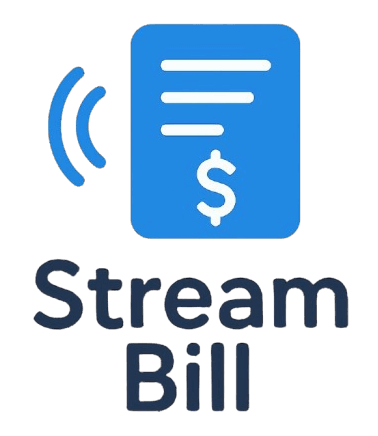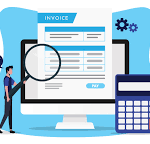Recurring payments are becoming an increasingly popular option for businesses and consumers alike. Whether it’s for subscriptions, membership services, utilities, or other types of regular billing, recurring payments have transformed how payments are processed. But what exactly are recurring payments, and how do they benefit both businesses and customers? In this comprehensive guide, we will explore all aspects of recurring payments.
What Are Recurring Payments?
Recurring payments are automatic, repeated transactions between a customer and a business or service provider. They occur on a regular basis—daily, weekly, monthly, or yearly—depending on the agreement between both parties. Instead of customers having to manually pay for a service or product each time, the payments are automatically charged to their credit card, debit card, or another payment method on file.
Some common examples of recurring payments include:
- Subscription services: Streaming platforms like Netflix, Spotify, and Disney+ charge customers a monthly fee for access to their content.
- Utilities: Bills for services such as electricity, water, internet, or mobile phone services are often set up as recurring payments.
- Gym memberships: Many fitness centers charge members a monthly fee that is automatically deducted from their accounts.
- Software-as-a-Service (SaaS): Companies offering software solutions (e.g., Adobe Creative Cloud, Microsoft 365) often charge customers on a recurring basis.
These transactions provide a seamless payment experience for consumers and consistent revenue streams for businesses.
How Recurring Payments Work
The process of recurring payments is fairly straightforward and automated. Here’s a breakdown of how it works:
- Customer Authorization: A customer agrees to a recurring payment plan by providing payment details (credit/debit card, bank account, etc.) and giving authorization for the recurring charges to occur. This is often done via a digital agreement or a Terms & Conditions page during the sign-up process.
- Payment Setup: Once authorized, the payment gateway stores the customer’s payment details in a secure database. This information is encrypted to ensure privacy and security.
- Payment Cycle: The system then automatically processes the payment according to the agreed-upon schedule (daily, monthly, yearly, etc.). A customer is charged on the designated date and for the specific amount outlined in their agreement.
- Payment Confirmation: After the payment is processed, the customer receives a notification or receipt confirming the payment. If the payment is unsuccessful (due to expired cards, insufficient funds, etc.), both the customer and the business are typically notified, and alternative payment arrangements are made.
- Renewal or Cancellation: After the set period, the payment cycle renews, and the process continues. If the customer wishes to stop the recurring payments, they can cancel their subscription or membership.
Types of Recurring Payments
Recurring payments can be classified into several types, each suited for different use cases. Let’s explore some of the most common types:
- Fixed Recurring Payments: This type of payment involves a fixed amount that is billed at regular intervals. It’s the most common method for services like streaming subscriptions, gym memberships, and SaaS products.
- Example: A monthly Netflix subscription of $10 is billed to your card every 30 days.
- Variable Recurring Payments: In this model, the amount billed can change from cycle to cycle. This type is commonly used for services where the charge amount depends on usage or consumption.
- Example: A utility bill that varies based on the amount of electricity used during the billing cycle.
- Usage-Based Recurring Payments: This type of recurring payment is closely related to variable payments but is more focused on consumption. It’s often used in services that measure specific metrics like data usage, minutes, or units consumed.
- Example: A cloud storage service where the charge is based on the amount of storage space used each month.
The Benefits of Recurring Payments
Recurring payments offer many advantages for both businesses and consumers. Let’s take a closer look at some of these benefits:
Benefits for Businesses
- Steady Revenue Stream: One of the most significant benefits for businesses is the predictable and consistent revenue stream. Knowing exactly how much money will come in each month helps businesses plan and budget more effectively.
- Reduced Administrative Costs: Automating payments eliminates the need for manual invoicing and follow-ups, saving businesses time and resources. This reduces the chances of errors and ensures smoother operations.
- Customer Retention: With recurring payments, businesses often have higher customer retention rates. Subscriptions and memberships that are automatically renewed are less likely to be canceled by the customer, as they don’t require active decision-making or additional steps.
- Improved Cash Flow: Since recurring payments happen on a set schedule, businesses can forecast their cash flow more accurately, which can aid in investment planning, staffing, and other operational aspects.
- Upselling Opportunities: Recurring payment models open up opportunities to upsell additional products or services during the subscription period. For example, a streaming service might offer premium features to users who are on recurring plans.
Benefits for Consumers
- Convenience: Recurring payments save time and effort. Customers don’t need to worry about remembering due dates or making payments manually—they are charged automatically, often with a simple notification that the payment has been processed.
- Better Budgeting: Fixed monthly payments, such as those for subscriptions, utilities, and memberships, allow consumers to plan their budgets more effectively by knowing exactly what will be deducted and when.
- No Risk of Missed Payments: Because payments are automated, there’s little risk of missing a bill, which can lead to late fees or service interruptions. This is especially important for essential services like utilities or insurance.
- Access to Premium Services: Many subscription-based models allow consumers to access high-quality services or products at affordable rates by spreading out the cost over time. This makes premium services more accessible to a wider audience.
The Risks and Challenges of Recurring Payments
Despite their many benefits, recurring payments come with some risks and challenges that both businesses and consumers should be aware of.
For Businesses
- Customer Attrition: While recurring payments can increase customer retention, businesses must still be proactive in keeping customers satisfied. If a customer’s needs change or they are no longer happy with the service, they may cancel their subscription.
- Chargebacks and Disputes: Some customers may dispute recurring charges if they feel they were incorrectly billed or forgot about the subscription. This can lead to chargebacks, which can be costly and time-consuming to resolve.
- Difficulty in Managing Cancellations: If a customer decides to cancel, businesses need to ensure that the process is straightforward. A complicated cancellation process can lead to frustration and negative reviews.
For Consumers
- Unwanted Subscriptions: Consumers may forget about subscriptions they’ve signed up for, leading to recurring charges for services they no longer use. This can be problematic if the consumer doesn’t notice the charges or forgets to cancel.
- Unexpected Charges: In some cases, businesses may increase prices or change payment terms without providing adequate notice. This can result in unexpected charges for consumers, leading to dissatisfaction.
- Difficult Cancellation Policies: While recurring payments are convenient, some services make it difficult for consumers to cancel. Hidden fees, complicated cancellation processes, and long wait times can lead to a negative experience.
Best Practices for Managing Recurring Payments
For both businesses and consumers, there are a few best practices to follow when dealing with recurring payments.
For Businesses
- Clear Terms and Conditions: Always provide clear terms and conditions about the payment structure, renewal cycles, and cancellation policies. Transparency helps avoid confusion and disputes.
- Reminder Notifications: Send out timely reminders to customers about upcoming renewals, price increases, or changes to terms. This keeps customers informed and helps reduce chargebacks.
- Easy Cancellation Process: Make sure that customers can easily cancel their recurring payments if they choose to do so. Offering a simple and hassle-free cancellation process will improve customer satisfaction and retention.
For Consumers
- Monitor Subscriptions Regularly: Regularly check your accounts and subscriptions to ensure you are only paying for services you use. Cancel any unnecessary subscriptions to avoid unwanted charges.
- Understand the Terms: Always read the fine print and understand how the recurring payments work, including the amount, billing cycle, and cancellation policy.
- Use Payment Management Tools: Consider using digital payment management tools or apps that can help you track your recurring payments and provide reminders when charges are coming up.
Conclusion
Recurring payments offer a wide range of benefits, including convenience, consistency, and cost-effectiveness. For businesses, they provide a reliable revenue stream and customer retention, while for consumers, they offer an easy way to access products and services with minimal hassle. However, both businesses and consumers should be aware of the potential challenges, such as unexpected charges or difficulty canceling subscriptions.
By understanding how recurring payments work and following best practices, both businesses and consumers can enjoy the full benefits of this payment method, ensuring smoother transactions and better experiences for all parties involved.



